Bangladesh 6 – Joypurhat
4.05pm, 18 April 2016
All I can say about this trip is wow, wow, wow.
Yesterday I got taken in an auto (electric tuk tuk) to Alta Dighi – a Dighi is a Lake – which they are impressed by here but back home we would call it a farm pond.
This particular one was roughly 500 meters long by maybe 50 meters across, it had some ducks and some people doing washing in the dirty water but apart from that it wasn’t anything much to look at. But the end of the Lake abutted the Indian border, and that was interesting. There was a path with a sign saying do not cross this line, then some open ground with some low bushes. In the distance over the low bushes I could see a security fence like at a prison running sometimes parallel and sometimes not to the path. I could also make out a watch tower and what looked like a shelter from the sun for a border patrol guard. I figured the guard would be Indian because no Indian would want to break into Bangladesh – or so I thought until I was informed otherwise the next day (more on that later).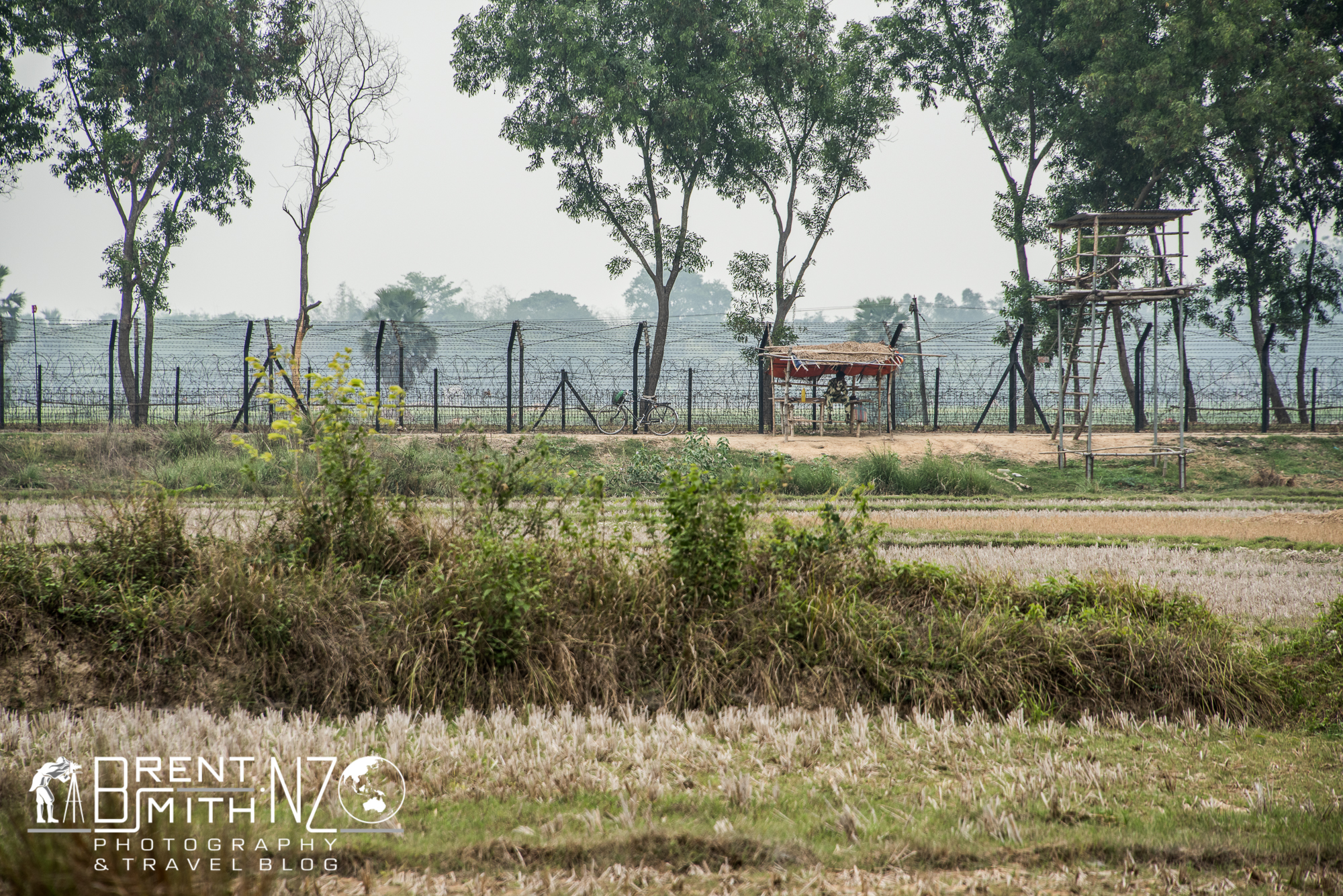
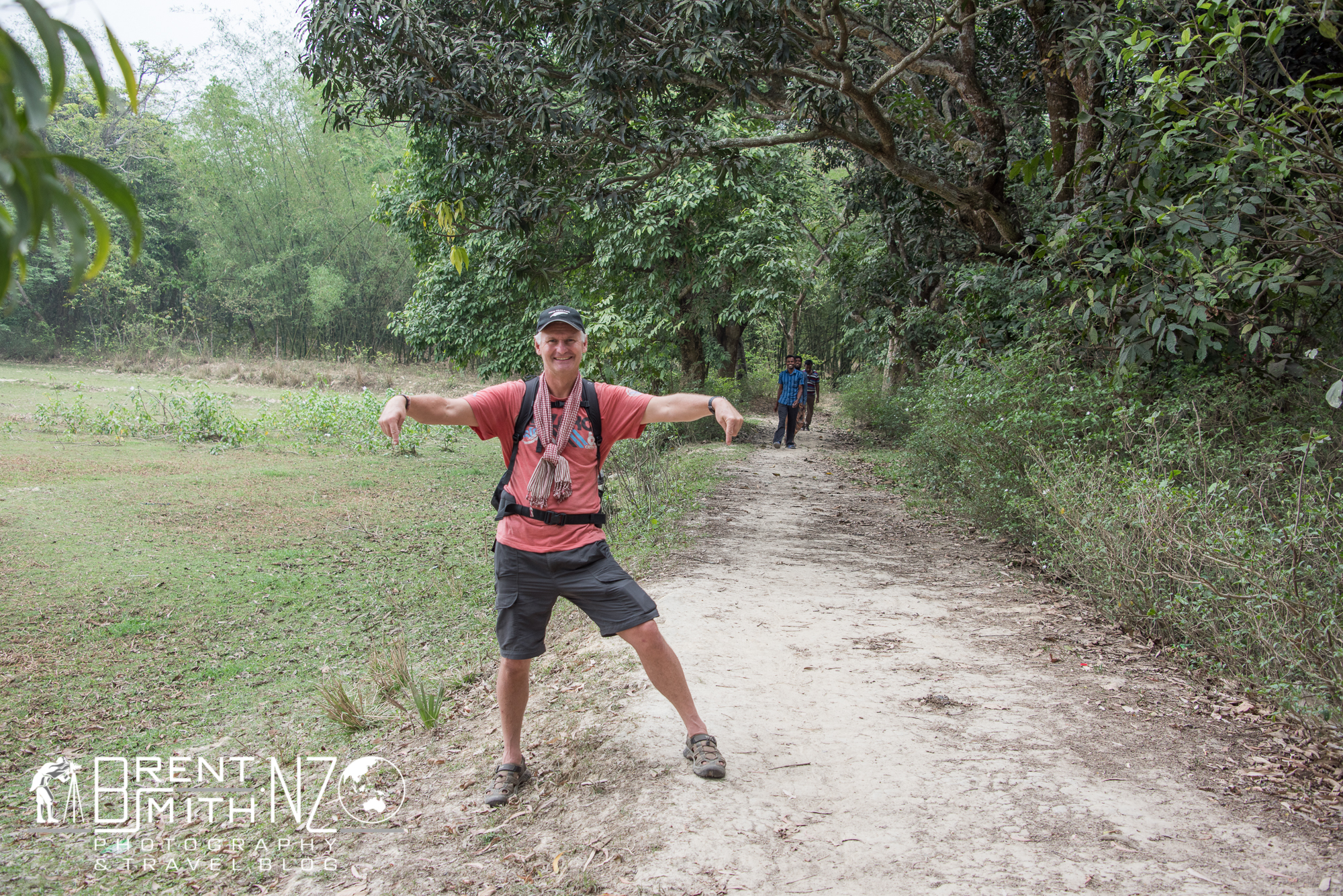
Left foot in India, Right foot in Bangladesh
Anyway, I was curious to get closer look so decided to become a spy. I noticed a small line of bushes that wound it’s way across what I thought was no mans land. I left the path and entered where I should not have been. I skulked my way through the bushes and across some open ground. After about 15 minutes of skulking, I was close enough to clearly photograph the fence, the guard in his shelter and the watch tower. Then like a good covert spy I made my way back to the path where I was spotted by some locals. They couldn’t believe that a white man was spying on the Indians – after a discussion of sorts it turned out that the fence wasn’t actually the border and that the fence was about 150 meters inside India at that point.
Turns out that the edge of the path was the actual border and that I had been skulking about in India.
I got some photos of me standing with one foot on the path (Bangladesh) and one foot off the path (India). An interesting experience not had by many!!
From there we went to a couple of places where there were ruins which were ok but not amazing.
On the way I saw some guys making bitumen for the road – they were boiling tar in 40 gallon drums over a fire pit, shoveling mix into a machine that rotated, they then poured the tar in at the end and mixed it manually – hot, dirty unpleasant work – I gave them 500 Taka ($10) to share among themselves – we had a lot of laughs.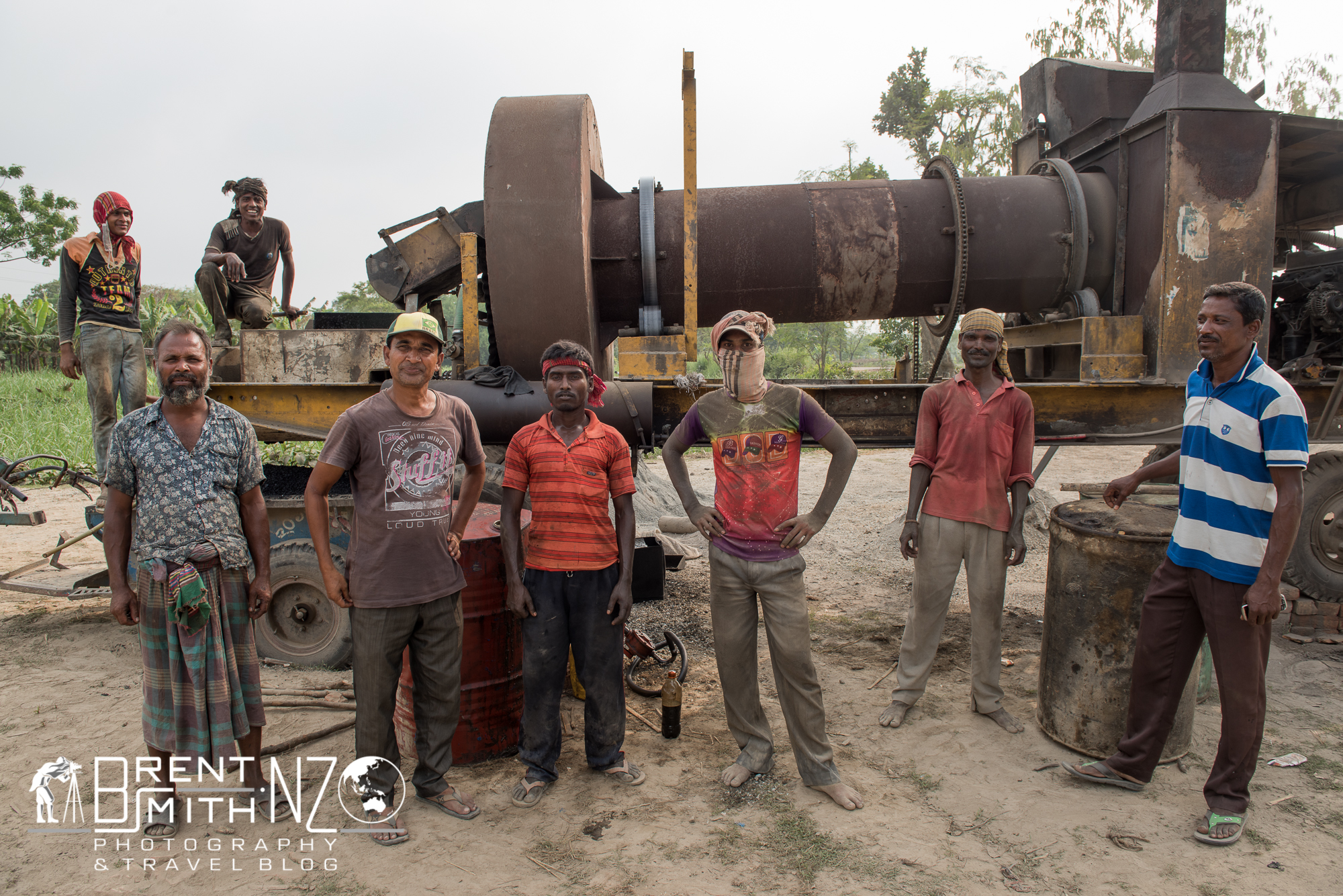
Then we headed back to where I was staying, when the auto driver dropped me off at 4.30pm We agreed he would pick me up again at 5.00pm so I could get to the Adibashi (Aboriginal people) Village I was staying at while it was still light. No problem he said. Well just after 5pm I was told he was coming shortly – don’t worry. Just after 5.15pm he would arrive before 5.30pm, just after 5.30pm he was only minutes away, just after 5.45pm Apurbo the man whose organisation I was staying with was going to turn up in a couple of minutes and take me instead, 6pm either the auto or Apurbo were very near, 6.15pm – no one knows where anyone is and all of a sudden no-one understands me, 6.30pm, one of the guys that was sitting around the whole time doing nothing gets asked to take me to the village, so on the back of his motorbike I go with my backpack on and holding my camera bag above that behind my head – Bangla time!!
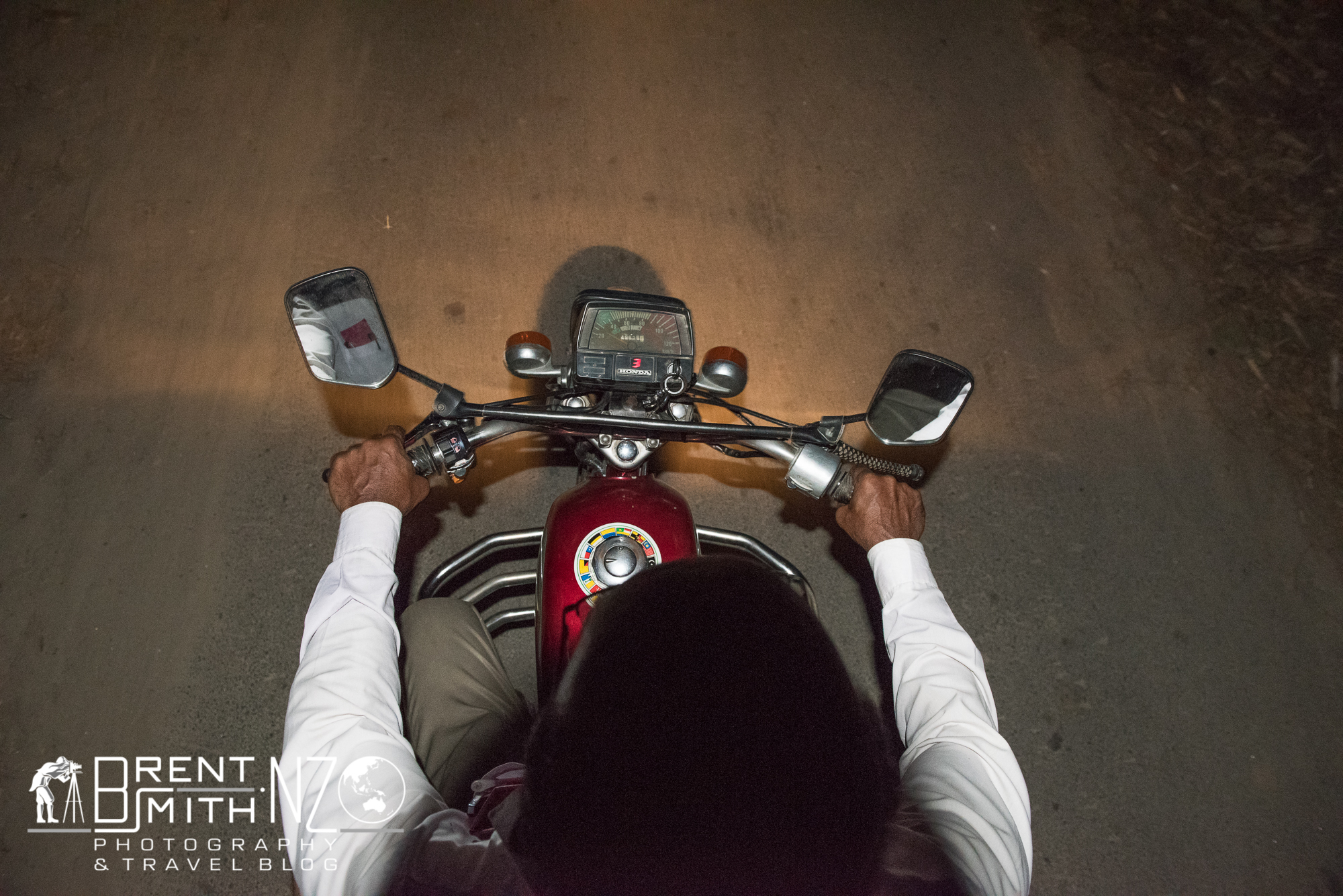 25 minutes later after cruising through narrow farm tracks I was back at the Adibashi Village, the scene of my dancing the night before. The village head man met me, instructed me to drop my bag, get on his motorbike and he took me to the local Adibashi market – well after dark by now. After about 5 minutes we arrived – it was full of locals (all men), and I was an object of curiosity. I took a few photos, boarded the bike again and headed back to the village.
25 minutes later after cruising through narrow farm tracks I was back at the Adibashi Village, the scene of my dancing the night before. The village head man met me, instructed me to drop my bag, get on his motorbike and he took me to the local Adibashi market – well after dark by now. After about 5 minutes we arrived – it was full of locals (all men), and I was an object of curiosity. I took a few photos, boarded the bike again and headed back to the village.
The head mans house was 1 room probably 2.5 meters by 5 meters. At one end was a double bed, there was one table full of stuff, his motorbike, 5 bench seats and a whole lot of bags of chicken feed.
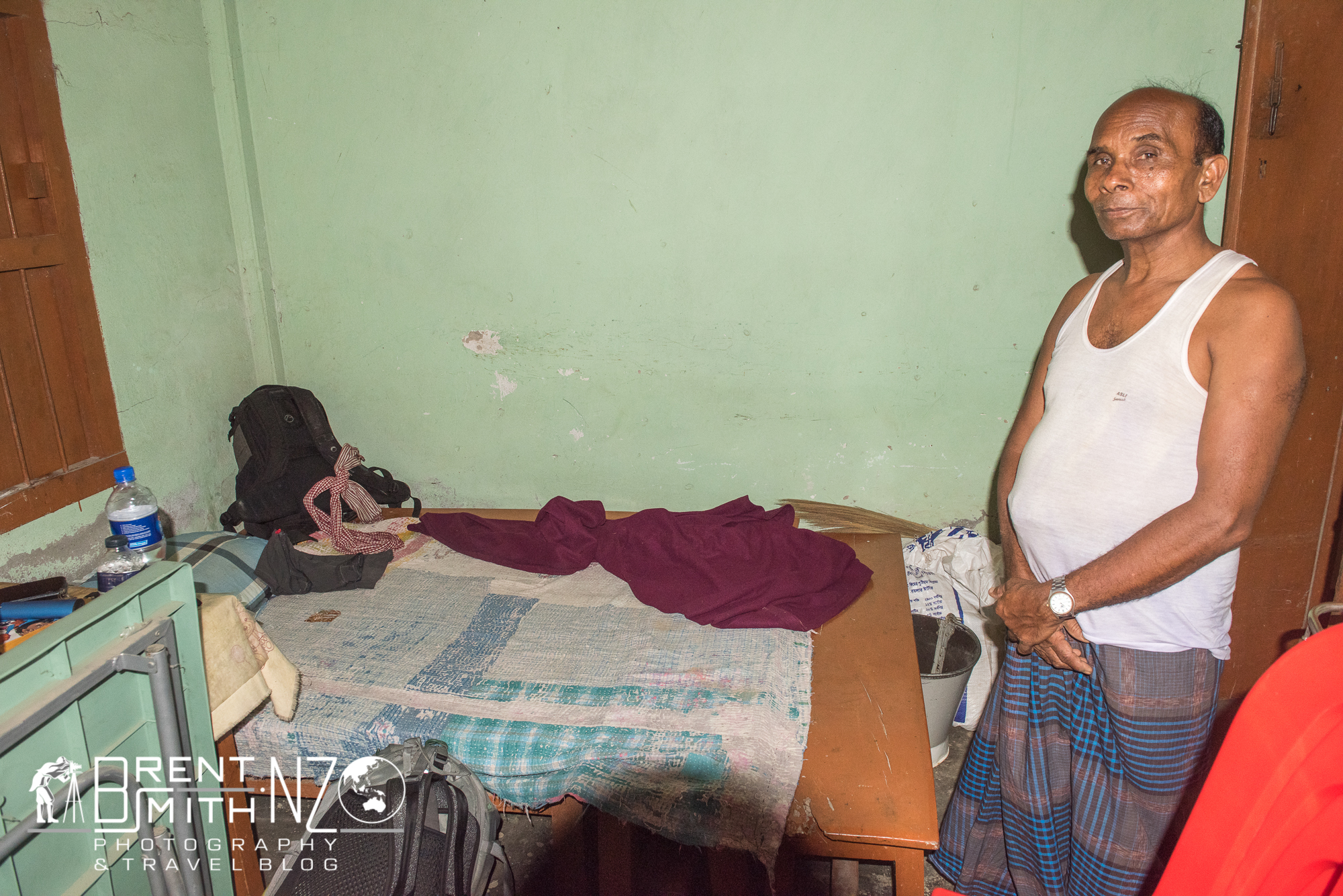
My bed in the Village Head Mans room
The village head man was about 70 I would guess, he indicated that I was going to sleep on his bed (which was piled high with his stuff), I asked where would he sleep and he indicated that he would sleep on the bed also. It really wasn’t big enough for two, so instead I came up with a plan to shift stuff off the bench seats and said I would sleep there. He agreed and that was what I did later in the evening – the 5 bench seats weren’t long enough and my legs were hanging over the end so he found another one which we added to the other 5 giving me a longer bed, rock hard, but long enough.
After the bed construction we headed out for a night time tour of the village. The houses were each basically a small courtyard surrounded by walls and a couple of rooms for sleeping in. They had power (when it was on), they had dirt floors and their goats, chickens and cow were bought in at night to either wander or be tethered to a post. They cook over a hole in the ground built up with mud to allow a wok to sit on it – they feed leaves and anything else they can burn into a hole which leads to under the wok. Simple, economical and efficient – if you don’t mind the smoke.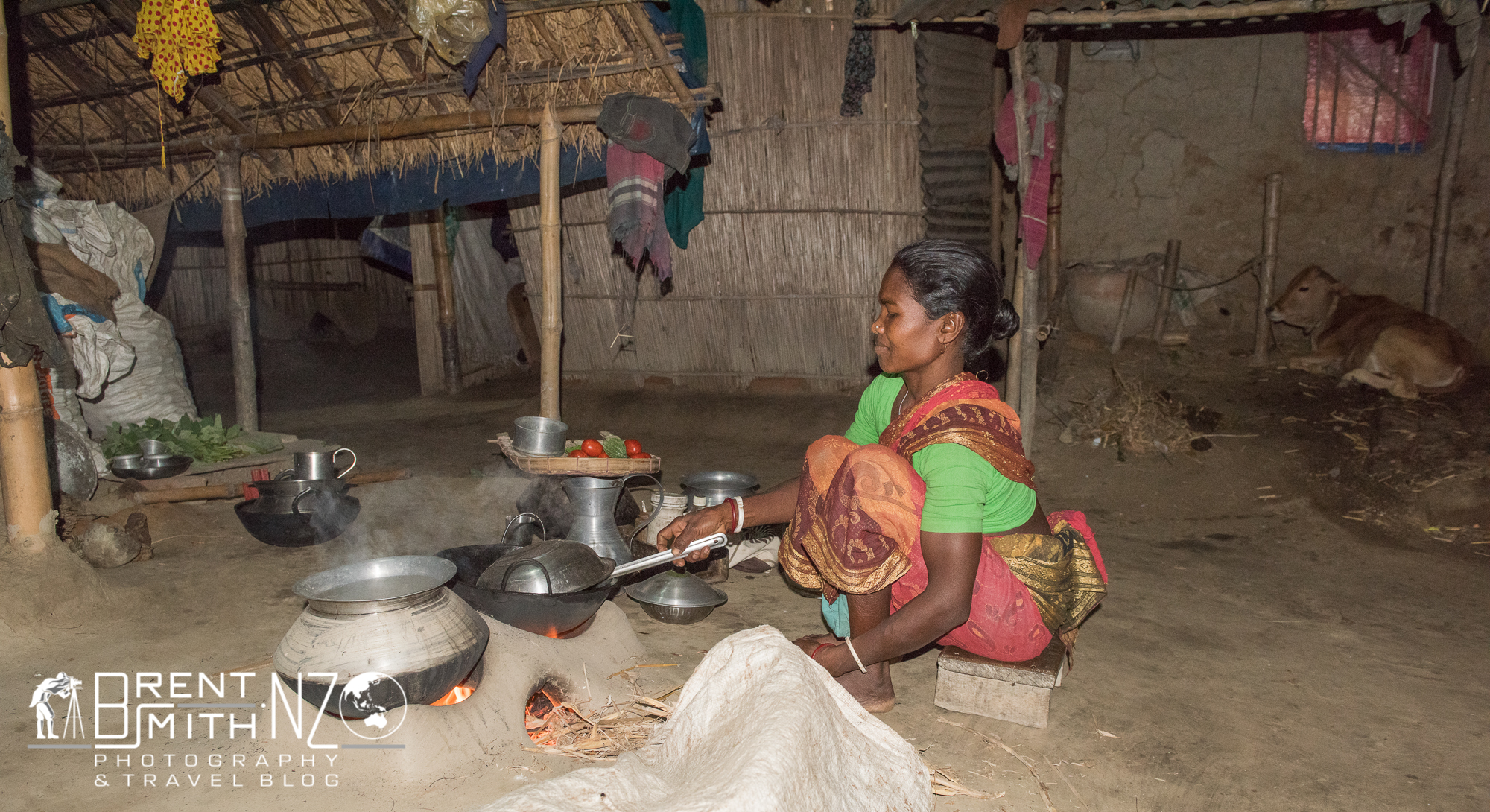
We must have visited 20 houses – all with pretty much identical layout, so I guess it works well.
Every time we went through the iron opening in the fence to another house we were immediately presented with plastic seats to sit on. We would sit for a couple of minutes of awkward silence before moving on to the next house to do the same. It was fascinating to see how they had things set up. The had nothing but were very generous.
Never before had they had someone else from another country stay and they thought I was slightly mad, but it was great all the same. We then headed back to the village heads house, and I fell asleep on my rock hard bed almost instantly, just after 11pm
